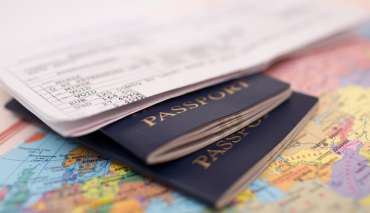Globalisation and migration are reshaping modern day landscape. The importance of dual citizenship has risen since the 1990s to high level of immigration with a possibility to pursue economic opportunities. Dual Nationality (or Plural citizenship) is currently tolerated worldwide with a friendlier approach by over by 70% countries with the current world population heading towards 8 billion people. Dual citizenship was legalized much earlier by many European countries which was followed later by Canada and United States.
- United Kingdom (1948),
- France (1973),
- Canada (1976).
- United States (1990)
- Italy (1912)
The Dual citizenship acceptance has progressed faster in the Americas and Oceania and slower in Africa and Asia. By 2019, however, 75% of countries maintain a more tolerant approach towards dual citizenship and allow citizens to voluntarily acquire the citizenship of another country, without automatic repercussions for the citizenship of origin.
Let us take a look at the history of dual citizenship in some important countries.
United Kingdom
The United Kingdom legalized dual citizenship in 1948.
Prior to 1870, British subjects could not divest themselves of their nationality in any circumstances. However, in addition to introducing provision for renunciation of British subject status, the Naturalization Act 1870 provided that British subjects would be deemed to have lost that status automatically if they voluntarily naturalized in a foreign country. If a foreign man was married to a British subject at that time, his wife would be deemed to have acquired his new nationality – whether or not she had – and as a result, many women effectively became stateless. The same applied, potentially, to his children who were resident in that foreign country.
Below is the timeline for important events related to dual nationality in the UK.
1914
The British Nationality and Status of Aliens Act 1914 retained the concept of loss of British subject status by naturalization in a foreign country and, initially, the 1870 Act provisions relating to the status of wives. However, the British Nationality Act 1933, passed as a result of the 1930 Hague Convention, provided retrospectively that:
• A woman who married a foreign national would not lose British subject status unless she automatically acquired her husband’s nationality as a result of the marriage
• Where her husband naturalized as a foreign national during the marriage, she could make a declaration of retention of British nationality
1922 – 1943
As regards minors, the position was similar, although rather more complicated. The British Nationality Act 1922, however, provided that children who held another nationality would lose British subject status unless, on attaining majority (i.e. age 21), they declared a desire to remain British and, if possible, renounced the other nationality. The “renunciation” element was repealed by the British Nationality Act 1943, which also provided for the acceptance of “late” declarations of retention (as a result, children could be deemed to have retained British nationality by making a declaration under the 1943 Act even if they had lost it under the 1922 Act).
1948
The British Nationality Act 1948 removed restrictions on dual nationality, largely for the following reasons:
• Dual nationality was not thought to be so undesirable, since most practical problems were avoided by the Master Nationality Rule (see below)
• The majority of cases of dual nationality were caused by the conflict of laws rather than by naturalisation abroad
• There had been difficulties administering the 1914 Act provisions: it was not always clear whether a person had acquired a foreign nationality voluntarily by naturalisation, it often involved the interpretation of obscure foreign law, and there were anomalies
• The policy of allowing British nationality to be retained was felt to be justified by the loyalty shown during the Second World War by the large British communities abroad with dual nationality
Diplomatic Protection
The UK Government normally extends diplomatic protection to British nationals outside the UK. However, Article 4 of the Hague Convention on Certain Questions relating to the Conflict of Nationality Laws, 1930 provides that “a State may not afford diplomatic protection to one of its nationals against a state whose nationality such person also possesses
Master Nationality Rule
Known as the “Master Nationality Rule”, the practical effect of this Article is that where a person is a national of, for example, two States (A and B), and is in the territory of State A, then State B has no right to claim that person as its national or to intervene on that person’s behalf. Such a person who goes into the territory of a third state may be treated as a national of either A or B – it does not normally matter which one, except, for example, where the courts of the third state have to adjudicate upon matters relating to that person’s status and the relevant laws depend on the person’s nationality. In such cases, it is necessary to choose an effective nationality (i.e. one of the two nationalities is selected as effective for the purposes of the third state).
Canada
The status of “Canadian citizen” was first created under the Immigration Act, 1910 which included anyone who was:
- a person born in Canada who had not become an alien;
- a British subject possessing Canadian domicile; and
- a person naturalized under the laws of Canada who had not subsequently become an alien or lost Canadian domicile.
Canada restricted dual citizenship between 1947 and 1977, there were some situations where Canadians could nevertheless legally possess another citizenship. For example, migrants becoming Canadian citizens were not asked to formally prove that they had ceased to hold the nationality of their former country. Similarly children born in Canada to non-Canadian parents were not under any obligation to renounce a foreign citizenship they had acquired by descent. Holding a foreign passport did not in itself cause loss of Canadian citizenship.
Citizenship law was reformed by the Citizenship Act, 1976 (popularly known as the 1977 Act), which came into force on 15 February 1977. Canada removed restrictions on dual citizenship, and many of the provisions to acquire or lose Canadian citizenship that existed under the 1947 Act were repealed.
France
French nationality and citizenship were concepts that existed even before the French Revolution in 1789. The 1804 French Civil Code, which allowed the possibility of naturalization. In 1851 legislation allowed third generation immigrants (those with one parent born on French soil) were allowed to naturalize. Further 1889 amendments allowed second generation immigrants (those born on French soil) were allowed to naturalize once they reached the age of majority. Dual citizenship was officially recognized for both men and women on 9 January 1973; since then, possession of more than one nationality does not affect French nationality
Spain
Dual citizenship is permitted for all Spaniards by origin, as long as they declare their will to retain Spanish nationality within three years of the acquisition of another nationality. This requirement is waived for the acquisition of the nationality of an Iberoamerican country, Andorra, the Philippines, Equatorial Guinea or Portugal, and any other country that Spain may sign a bilateral agreement with.
Foreign nationals who acquire Spanish nationality must renounce their previous nationality, unless they are natural-born citizens of an Iberoamerican country, Andorra, the Philippines or Equatorial Guinea. Since October 2002, dual citizens of Spain and another country who are born outside Spain to a Spanish citizen parent born outside Spain must declare to conserve their Spanish nationality between ages 18 and 21
Please refer to official publication on dual citizenship by European commission.
Italy
Dual citizenship under law no. 555 of 1912 was of central importance for the italian diaspora in many countries, as it relates to the holding of Italian citizenship alongside another citizenship, is article 7 of law number 555 of 1912. The provisions of this article gave immunity to some living Italian children from the citizenship events of their fathers. According to Italian law, multiple citizenship is explicitly permitted under certain conditions if acquired on or after 16 August 1992 (Prior to that date, Italian citizens with jus soli citizenship elsewhere could keep their dual citizenship perpetually, but Italian citizenship was generally lost if a new citizenship was acquired, and the possibility of its loss through a new citizenship acquisition was subject to some exceptions
United States
The Recognition of dual citizenship in the United States, the Immigration and Nationality Act (INA) does not define dual citizenship or take a position for or against it. During the Wars, Americans who maintained a second nationality, legislation in 1940 and 1952 made it almost impossible to actively maintain another nationality without forfeiting one’s U.S. citizenship. In 1978, Congress eliminated residency requirements and the policy of terminating the citizenship of birthright dual nationals who lived in their second country of nationality for more than three years. In 1990, the State Department reversed its former policies toward a far friendlier approach to dual citizenship.
Australia
Before 1949, there was no legal concept of Australian citizenship. Every Australian was a British subject, including immigrants who arrived and became naturalised. Throughout the 1960s and 1970s, Australian citizens still had to declare their nationality as British. In 1984, the law was changed and Australian citizens were no longer British subjects.
The legal status of Australian nationality or Australian citizenship was created by the Nationality and Citizenship Act 1948. The first australian citizenship ceremony in 1949. In 2002, Australia adopted dual citizenship provisions allowing new migrants to have their heritage reflected officially. Later in 2007, a citizenship test for prospective new citizens to obtain the knowledge they would need to successfully integrate into Australian society, before taking the final step at a citizenship ceremony.
Latin America
In the 1990s, Colombia, the Dominican Republic, Ecuador, Costa Rica, and Brazil passed dual citizenship laws granting their expatriates the right to naturalize in the receiving country without losing their nationality of origin
Latin America granted dual nationality in the 1990s relaxing rules following US :
- Colombia made this change in 1991; the
- Dominican Republic, in 1994;
- Costa Rica and Ecuador, in 1995
- Brazil in 1996.
Switzerland
In Switzerland, there is no restriction on multiple citizenship in Switzerland since 1 January 1992, according to Federal office of migration. An estimated 60% of Swiss nationals living abroad in 1998 were multiple citizens. A latest survey in 2019 indicated, 65% obtained through naturalization and only 35% by birth. Swiss nationality law permits multiple citizenship, a Swiss national who also holds another country’s citizenship may be required to renounce a citizenship, if that foreign country’s nationality law forbids such multiple citizenship.
Turkey
Turkey’s citizenship policies have been a response to the population movements to and from the country since the 1960s. Turkish nationality law has not taken a consistent approach to multiple citizenship since the Turkish
Nationality Act came into force in 1964. Sometimes a pro-dual citizenship approach was followed by the Turkey for the aliens who wanted to acquire Turkish citizenship, whereas an anti-dual citizenship approach was adopted for Turkish citizens who wanted to acquire the nationality of another state. Policies with regards to multiple citizenship for Turkish citizens changed in early 1980s in response to dual nationality demands coming from the Turkish migrant community living in the Western European Countries. The Turkish Nationality Act was amended to remove these obstacles on dual nationality for Turkish citizens in 1981. Turkish law has encouraged dual citizenship since 1981 when the Turkish Nationality Act was amended for that purpose. As a result of the amendment, a Turkish citizen can request the nationality of another state without surrendering his or her Turkish citizenship (TVK Arts 21-22). The only condition for dual citizenship is to obtain permission of the Ministry of Interior (TVK Art 22 (3)).





